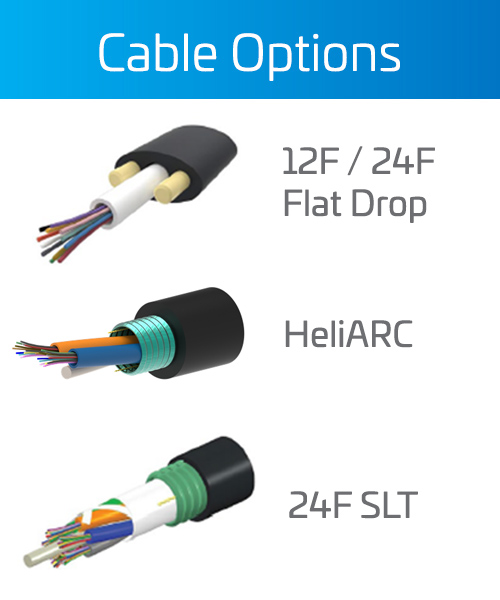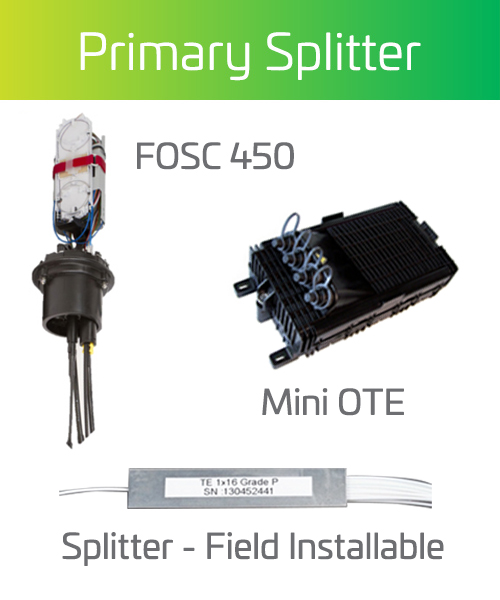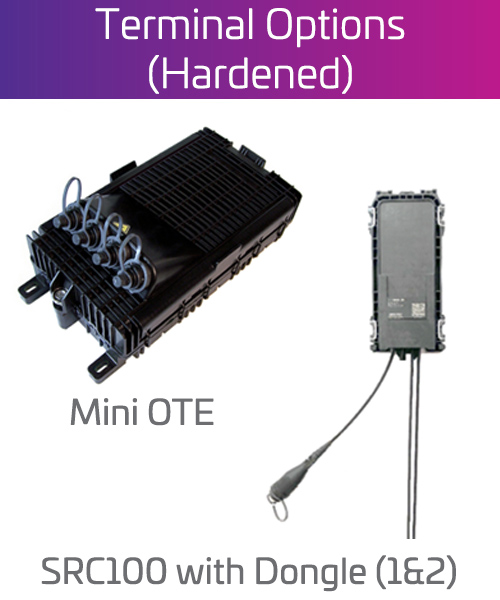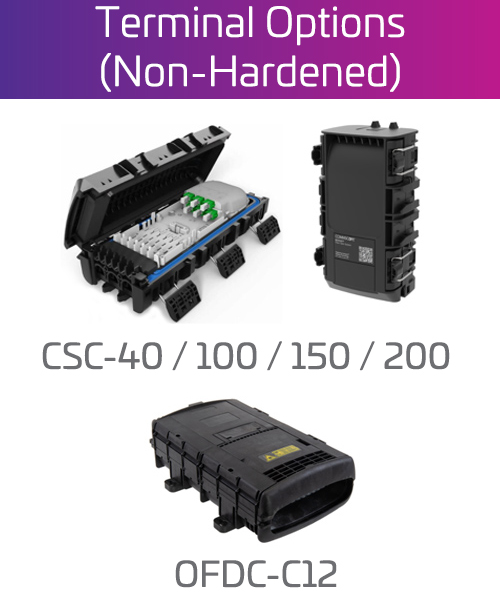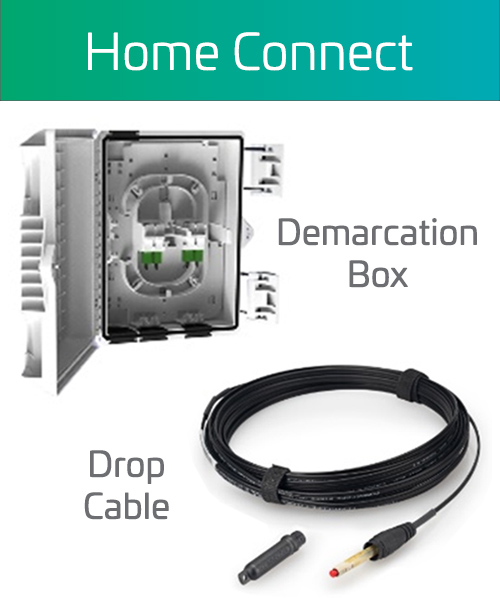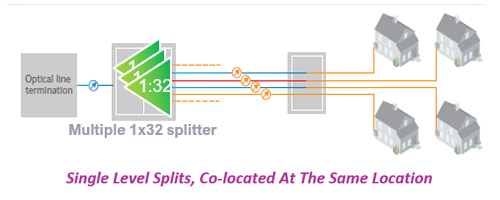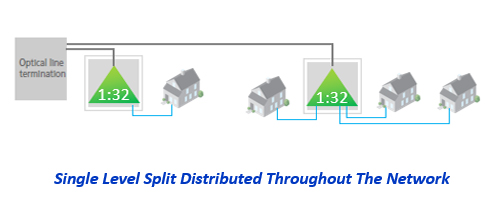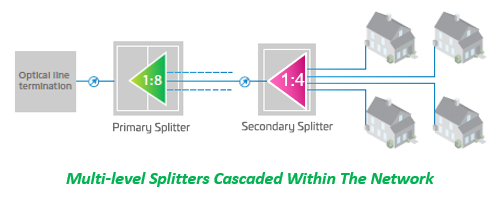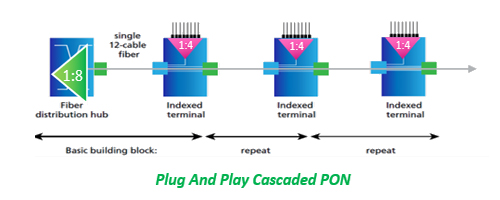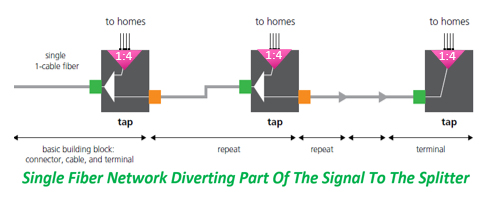Cascaded - Daisy Chain Architecture
Cascaded Daisy Chain leverages multi-level splitting techniques with the outputs from the primary splitter, consolidated into a single distribution cable sheath--which in turn would be intercepted by an access terminal along the distribution cable. The access terminal houses the secondary splitter.
Daisy chaining allows terminals to be installed anywhere along the length of the distribution cable, removing the need for extensive planning--reducing inventory holding requirements and allows for provisioned PtP (Point-to-Point) services to be accessed. Daisy chain networks can lead to reduced cable installation requirements as the F1 (Feeder) and F2 (distribution) networks are within the same cable sheath.
Pros
- Reduced Fiber Counts - Reduced Splicing
- Smaller Cable Diameters
- Re-use of distribution fibers within cable
- No overhauling of cables
- Simple Point-to-Point inclusion
- Minimal pre-engineering efforts, enables deferred terminal placement
Cons
- Increased number of splicing locations
- Mid-sheath cable prep at terminal locations
- May require reconfiguration of legacy OSS/BSS (IT) Systems


